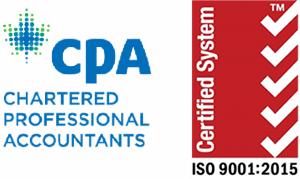Payroll source deductions are amounts that an employer is required to withhold from an employee’s pay and remit to the government on behalf of the employee. These deductions include federal and provincial income tax, Employment Insurance (EI) premiums, and Canada Pension Plan (CPP) contributions. In this blog, we will explore the what, why, and how of payroll source deductions and remittance.
As a company with decades of experience in payroll and accounting, CPA4IT can help employers navigate the trickiness of payroll source deductions. Our team of experts can assist in registering with the CRA, obtaining a payroll program account number, and completing and filing periodic returns and reports. We can also provide guidance on accurately calculating and remitting payroll source deductions to avoid penalties and interest charges.
What are Payroll Source Deductions?
First, let’s look at the what of payroll source deductions. As mentioned, these deductions include federal and provincial income tax, EI premiums, and CPP contributions. Federal and provincial income tax deductions are based on the employee’s income and the applicable tax rates. EI premiums are used to provide income support to workers who lose their jobs or are unable to work due to illness, injury, or pregnancy. CPP contributions are used to provide retirement, disability, and survivor benefits to Canadians.
Importance of payroll source deductions and remittance
Now, let’s delve into the why of payroll source deductions and remittance. The main reason for payroll source deductions is to ensure that employees pay their fair share of taxes and contributions. Without payroll source deductions, employees would be responsible for paying their taxes and contributions on their own, which could lead to non-compliance and difficulties for both the employee and the government. By having the employer handle these deductions and remittance, it makes the process more streamlined and efficient for both parties.
In addition to ensuring compliance with tax and contribution obligations, payroll source deductions also serve to provide employees with certain benefits. For example, EI premiums entitle employees to income support if they lose their job or are unable to work due to illness or injury. CPP contributions provide employees with retirement, disability, and survivor benefits. By paying these premiums and contributions through payroll source deductions, employees can access these benefits when they need them.
Method of Carrying out payroll source deductions and remittance
So, how are payroll source deductions and remittance carried out? Employers are responsible for calculating and withholding the appropriate amount of payroll source deductions from each employee’s pay. The employer must then remit these deductions to the government on behalf of the employee. In Canada, the Canada Revenue Agency (CRA) administers payroll source deductions and remittance for federal taxes and contributions, while provincial governments administer deductions and remittance for provincial taxes and contributions.
Employers are required to register with the CRA and obtain a payroll program account number. They must also complete and file periodic returns and reports, such as the T4 Summary and the T4 Slip, which provide information on the payroll source deductions that have been withheld and remitted.
It is important for employers to accurately calculate and remit payroll source deductions, as failure to do so can result in penalties and interest charges. Employees can also request a copy of their T4 Slip to ensure that the correct amount of payroll source deductions have been withheld and remitted on their behalf.
In summary, payroll source deductions are amounts that an employer is required to withhold from an employee’s pay and remit to the government on behalf of the employee. These deductions include federal and provincial income tax, EI premiums, and CPP contributions. Payroll source deductions serve to ensure compliance with tax and contribution obligations and provide employees with certain benefits. Employers are responsible for calculating and withholding the appropriate amount of payroll source deductions and for remitting these deductions to the government. It is important for employers to accurately calculate and remit payroll source deductions to avoid penalties and interest charges. Employees can also request a copy of their T4 Slip to ensure that the correct amount of payroll source deductions have been withheld and remitted on their behalf.
Conclusion
Payroll source deductions can be quite complex, especially if you aren’t used to them. Our decade’s worth of experience allows us to make this process smooth and accurate for our clients. This can enable you to focus on where it matters to organize finances, create wealth, and transform that wealth into a legacy!
For further assistance, feel free to book a FREE consultation with one of our experts by clicking here.







